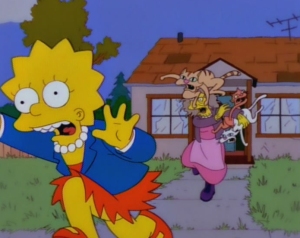On Looking into 50 Shades of Grey
It behoves the aspirant cultural critic to investigate all significant cultural phenomena, and with this in mind I have lately been looking into E.L. James’s bestselling erotic novel, 50 Shades of Grey, which is the fastest selling book of all time. Suddenly, it’s taken the generally unspeakable topic of sado-masochistic sexual relationships and presented it in a way that has found huge favour in the mainstream. It has provided a new code with which to speak of things which as their uneuphemized selves cannot be spoken of. Yet whether 50 Shades is really about sex and/or sado-masochism is harder to say. Perhaps its popularity is that it is a book nominally about sex that really gives free rein to other fantasies, giving to certain old tropes a veneer of newness by the addition of sado-masochistic content. Here, having read 66% of the novel by Kindle’s calculations, I will take time to reflect on this groundbreaking work, this Sign of the Times, as our old friend Mr C. would say.
The relationship between Christian Grey and the young female narrator Anastasia Steele is about much more than sex. The sexual dominance Grey employs is only an extension of what happens in the rest of their relationship. He follows her, he’s there when she’s about to do something dumb or dangerous, he always knows what she’s thinking, he has the power to give her all the things she wants materially, if she deserves them. He is a sort of secular god, with added powers of providing sexual satisfaction. He doesn’t provide Anastasia with just a good sexual partner, but with a whole metanarrative, a design for life. He motivates her, partly through fear of losing his favour, to change her lifestyle, to eat and drink better, to sleep better, to be fitter and more productive, to exercise – which she has hitherto hated; she is no longer in danger of a standard student life of alcoholic overindulgence whose dangers are highlighted in the early part of the book. She drives more slowly after meeting him, remembering “a stern voice telling me to drive carefully” (loc 312 – Kindle citation). Grey is a convenient construction who provides a personalized motivation to do all of the things she felt she should be doing anyway. He is an all-knowing, all-seeing providence guiding her every movement, and judging it infallibly. The same drives that are behind the creation of a Christian Grey are those hitherto sublimated in the religions of mankind. Religion is, in the words of Dr Freud (in Civilization and its Discontents (1929)):
[A] system of teachings and promises that one the one hand explains to him [i.e. man], with enviable thoroughness, the riddles of this world, and on the other assures him that a careful providence will watch over his life and compensate him in a future existence for any privations he suffers in this. The common man cannot imagine this providence otherwise than as an immensely exalted father.
The good doctor goes on to find this “so patently infantile, so remote from reality, that it pains a philanthropic temperament to think that the great majority of mortals will never be able to rise above such a view of life.”
In 50 Shades, this image of the immensely exalted father is not projected onto a literal god, but onto a real person (diegetically real, that is). It is the feeling of being watched over by a perhaps stern but certainly benevolent omnipotence that provides the attraction for Anastasia Steele. Sex, I would suggest, is a small part of this, and not the most important; only important, perhaps, in that sex is the hardest element of life to reconcile with the religious drives – but, yet, they must be made to reconcile, and this is what James achieves, providing a fantasy of life that has all bases covered. 50 Shades of Grey helps to fill a God-shaped void for many of its readers (and, by God, I mean, mostly, the wish to abdicate intellectuo-moral responsibility); the danger, of course, is in applying the “lessons” of 50 Shades to real life, as this involves the imputation of god-like status to some person. Whether this turns out to be more dangerous than imputing god-like status to an illusory entity, time will tell.
One is not, of course, suggesting that 50 Shades in itself and alone will be responsible for a rerouting of the religious drives onto individuals within a romantic and sexual context, but that it is a Sign of the Times in this regard. This is all based on the supposition that the drives which have hitherto given rise to religions are still operative and as it were searching for a new object.


